

RARE! BANANA WARS US MARINES CORPS with SPIRIT OF ST. LOUIS & LINDBERGH 1928 PHOTO
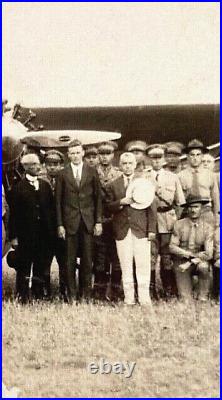
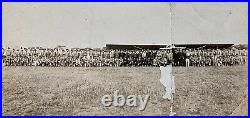
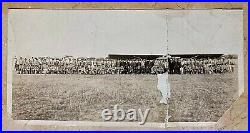
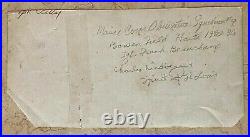
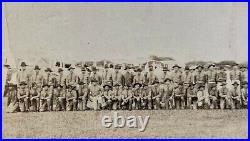
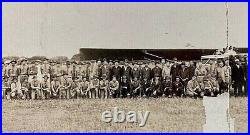
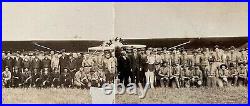
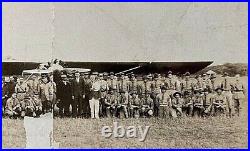
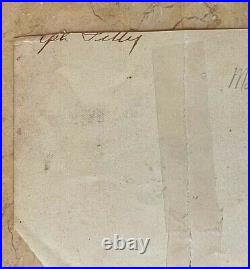
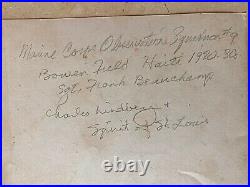

MARINES CORPS w/ SPIRIT OF ST. LOUIS & LINDBERGH 1928 PHOTO. PHOTOGRAPH of CHARLES A. LINDBERGH and HIS PLANE the SPIRIT of ST LOUIS ALONG WITH THE U. MARINE CORPS AVIATION OBSERVATION SQUADRON #9 AT BOWEN AIRFIELD IN THE ISLAND OF HAITI ON FEBRUARY 6-8 1928. MARINE CORPS AVIATION OBSERVATION SQUADRON #9 MARINES AT BOWEN AIRFIELD ALONG WITH OTHER OFFICERS AND DIGNITARIES WITH THE SPIRIT of ST. SERIAL NUMBER (N-X-211) IS VISIBLE UNDER THE WING. THIS WAS ONE OF CHARLES A. LINDBERGH and HIS PLANE The SPIRIT of ST LOUIS’S LAST PROMOTIONAL / GOODWILL FLIGHTS THAT HE FLEW TO BOWEN AIRFIELD AT PORT AU PRINCE, HAITI’S USMC AIR STATION JUST BEFORE FLYING IT TO WASHINGTON D. TO THE SMITHSONIAN INSTITUTE IN WASHINGTON D. TO BE INSTALLED IN THEIR COLLECTION WHERE IT IS TODAY. PERIOD PENCILED CAPTION ON THE REVERSE. Marine Corps Observation Squadron #9. Bowen Field Haiti 1920-30s. DIMENSIONS: 4″ x 8″. SHARP FOCUS AND VERY GOOD CONTRAST. THE PHOTO CONDITION COULD BE BETTER BUT IT IS WHAT IT IS. THIS IS NOT A REPRODUCTION OR A COPY. Charles Augustus Lindbergh b. 1974 was an American aviator, military officer, author, inventor, and activist. At the age of 25, he achieved instantaneous world fame by making the first nonstop flight from New York City to Paris on May 20-21, 1927. The Spirit of St. Louis (Registration: N-X-211) is the custom-built, single engine, single-seat, high wing monoplane flown by Charles Lindberg May 20-21, 1927, on the first solo nonstop transatlantic flight from New York, to France. During the United States occupation of Haiti in 1919 the United States Marine Corps stationed Marine Observation units using HS-1 and HS-2 aircraft in what became Bowen Field.


USMC Banana Wars Honduras Photo Marines Sailors Patrol HQ Puerto Cortes 1920s
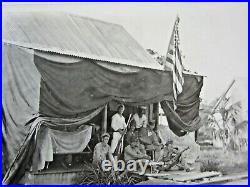
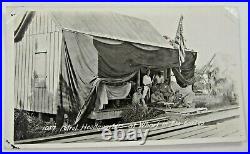
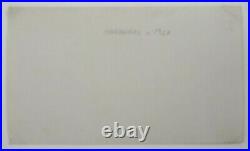

Estate sale find, vintage original photo, Patrol Headquarters at Wharf in Puerto Cortes, Honduras, circa 1920’s. The Banana Wars were a series of conflicts that consisted of military occupation, police action, and intervention by the United States in Central America and the Caribbean between the end of the Spanish-American War in 1898 and the inception of the Good Neighbor Policy in 1934. Honduras, where the United Fruit Company and Standard Fruit Company dominated the country’s key banana export sector and associated land holdings and railways, saw insertion of American troops in 1903, 1907, 1911, 1912, 1919, 1924 and 1925. Henry coined the term “Banana republic” in 1904 to describe Honduras. PLEASE SEE DESCRIPTION AND PHOTOS FOR ADDITIONAL DETAILS – The item appears to be in overall Fair to Good Minus used condition, signs of wear, creases, fading, tears, chipping, sunning and age toning, soiling, stains, writing, no odors, please see images.


Planes Guns And Automobiles I Between 2 Wars I 1919 Part 1 Of 4

USMC Banana Wars Honduras Photo Marines Sailors Patrol HQ Puerto Cortes 1920s
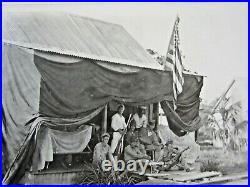
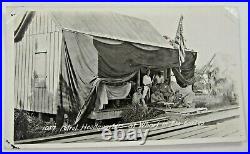
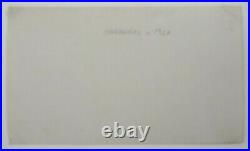

PLEASE SEE DESCRIPTION AND PHOTOS FOR ADDITIONAL DETAILS – The item appears to be in overall Fair to Good Minus used condition, signs of wear, creases, fading, tears, chipping, sunning and age toning, soiling, stains, writing, no odors, please see images.


WWI U. S. Veterans of Foreign Wars VFW M1917 Camouflage Helmet Post-War Doughboy
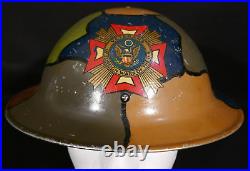
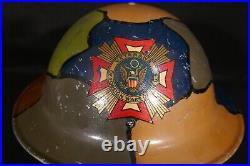
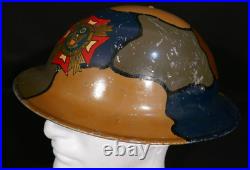
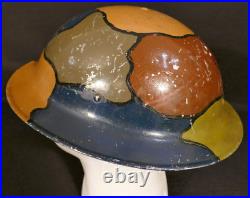
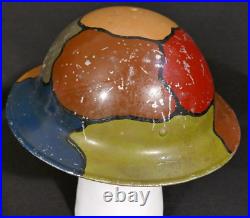
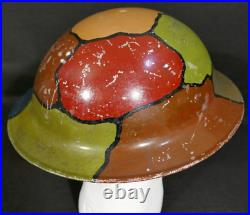

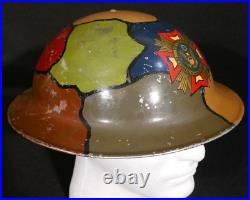
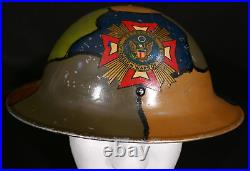
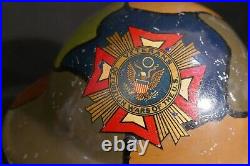
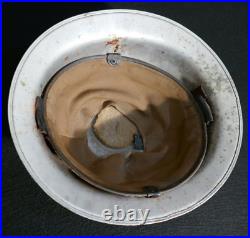
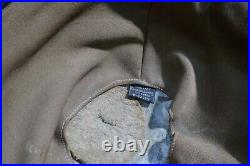
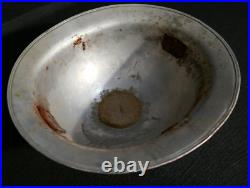
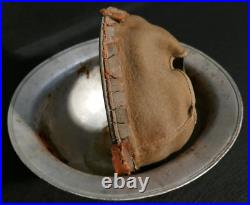
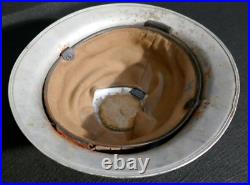
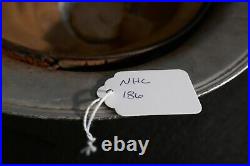

WWI US Veterans of Foreign Wars VFW M-1917 Camouflage Helmet Post-War Parade Doughboy. Wonderful Original WWI U. Veterans of Foreign Wars VFW Model 1917 Camouflage Helmet Post-War Aluminum Construction Parade Type Doughboy “Brodie”, Good Issued Condition as Photographed with the liner loose as seen – Recent Estate Acquisition & Presented as Acquired, Scarce. Check back often – we search estates and sources across the world to bring a fine selection of militaria. Please review all photos for details regarding the condition of the item listed – further condition information will be included in the listing as is relevant, if you need additional photographs or have questions regarding the condition please do not hesitate to ask. I describe all items to the best of my ability – please do not hesitate to ask any and all questions prior to the close of the listing. Mistakes very rarely occur – however if one does please rest assured that it will be corrected. International Buyers are Welcome! This item is in the category “Collectibles\Militaria\WW I (1914-18)\Original Period Items\United States\Hats & Helmets”. The seller is “tortugaacquisitions” and is located in this country: US. This item can be shipped worldwide.
- Conflict: WW I (1914-18)
- Original/Reproduction: Original
- Theme: Militaria
- Region of Origin: United States
- Country/Region of Manufacture: United States


Battle Of Novara And Marignano Italian Wars Documentary

Post Caesar CIVIL Wars Battle Of Mutina Roman History Documentary

USMC Marine Corps 1922-1925 Banana Wars Engraved Good Conduct medal GCM Pre WWII

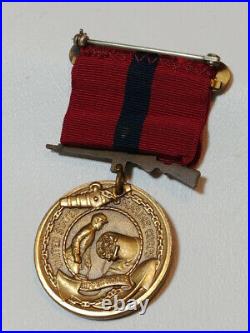
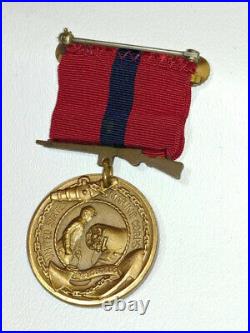
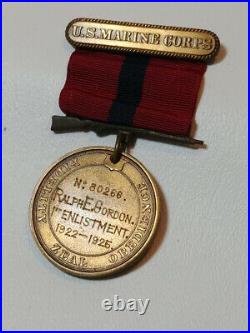
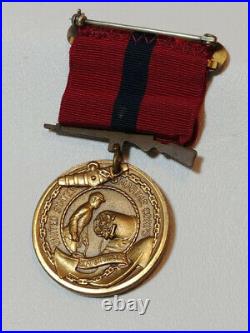

Comes with some research. The item “USMC Marine Corps 1922-1925 Banana Wars Engraved Good Conduct medal GCM Pre WWII” is in sale since Friday, September 25, 2020. This item is in the category “Collectibles\Militaria\1919-38\Original Period Items”. The seller is “vintageboardwalkalley” and is located in Belmar, New Jersey. This item can be shipped to United States, Canada, United Kingdom, Denmark, Romania, Slovakia, Bulgaria, Czech republic, Finland, Hungary, Latvia, Lithuania, Malta, Estonia, Australia, Greece, Portugal, Cyprus, Slovenia, Japan, China, Sweden, South Korea, Indonesia, Taiwan, South africa, Thailand, Belgium, France, Hong Kong, Ireland, Netherlands, Poland, Spain, Italy, Germany, Austria, Bahamas, Israel, Mexico, New Zealand, Singapore, Switzerland, Norway, Saudi arabia, United arab emirates, Qatar, Kuwait, Bahrain, Croatia, Malaysia, Chile, Colombia, Costa rica, Panama, Trinidad and tobago, Guatemala, El salvador, Honduras, Jamaica, Antigua and barbuda, Aruba, Belize, Dominica, Grenada, Saint kitts and nevis, Saint lucia, Montserrat, Turks and caicos islands, Barbados, Bangladesh, Bermuda, Brunei darussalam, Bolivia, Egypt, French guiana, Guernsey, Gibraltar, Guadeloupe, Iceland, Jersey, Jordan, Cambodia, Liechtenstein, Sri lanka, Luxembourg, Monaco, Macao, Martinique, Maldives, Nicaragua, Oman, Pakistan, Paraguay, Reunion, Uruguay, Russian federation.
- Country/Region of Manufacture: United States
- Original/Reproduction: Original


U. S. Army Indian Wars Campaign Medal Late 1930s Northern Stamping Contract
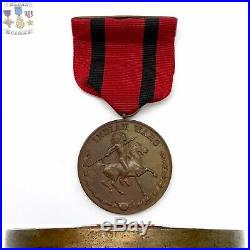
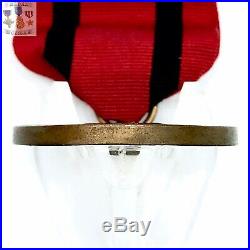
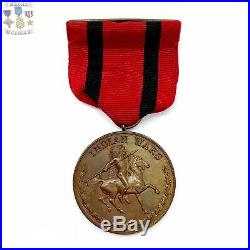
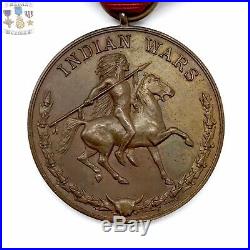
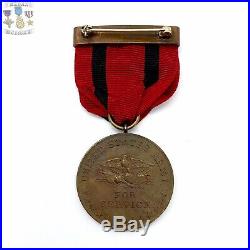
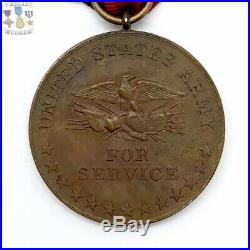

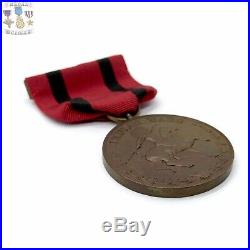
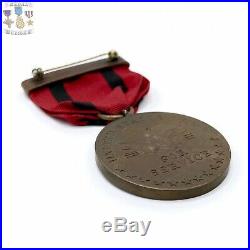


UNITED STATES ARMY INDIAN WARS CAMPAIGN MEDAL , W/ FULL WRAP BROOCH. NORTHERN STAMPING LATE 1930S CONTRACT. RIBBON DRAPE TESTED UV NEGATIVE AS SHOWN. The Indian Campaign Medal is a decoration established by War Department General Orders 12, 1907. The medal was retroactively awarded to any soldier of the U. Army who had participated in the American Indian Wars against the Native Americans between 1865 to 1891. The Indian Campaign Medal was established by War Department General Orders 12 in 1907. It was created at the same time as the Civil War Campaign Medal. The initial ribbon was all red; however, two black stripes were added in December 1917 because of the similarity to a ribbon used by the French for the French Legion of Honor. Campaign streamers of the same design as the service ribbon are authorised for display by units receiving campaign credit participation for Indian Wars as early as 1790. The inscriptions for streamers displayed on the organizational flag will be as indicated in the unit’s lineage and honours. The inscriptions for the 14 streamers displayed on the Army flag are listed in AR 840-10 and AR 600-8-22. The Code of Federal Regulations declares service in the following campaigns as requirements for award of the Indian Campaign Medal. Southern Oregon, Idaho, northern California, and Nevada between 1865 and 1868. Against the Comanches and confederate tribes in Kansas, Colorado, Texas, New Mexico, and Indian Territory between 1867 and 1875. Modoc War between 1872 and 1873. Against the Apaches in Arizona in 1873. Against the Northern Cheyennes and Sioux between 1876 and 1877. Nez Perce War in 1877. Bannock War in 1878. Against the Northern Cheyennes between 1878 and 1879. Against the Sheep-Eaters, Piutes, and Bannocks between June and October, 1879. Against the Utes in Colorado and Utah between September 1879 and November 1880. Against the Apaches in Arizona and New Mexico between 1885 and 1886. Against the Sioux in South Dakota between November 1890 and January 1891. Against hostile Indians in any other action in which United States troops were killed or wounded between 1865 and 1891. The Code of Federal Regulations describes the medal as follows. The medal of bronze is 114 inches in diameter. On the obverse is a mounted Indian facing sinister, wearing a war bonnet, and carrying a spear in his right hand. Above the horseman are the words Indian Wars, and below, on either side of a buffalo skull, the circle is completed by arrowheads, conventionally arranged. On the reverse is a trophy, composed of an eagle perched on a cannon supported by crossed flags, rifles, an Indian shield, spear, and quiver of arrows, a Cuban machete, and a Sulu kriss. Below the trophy are the words For Service. The whole is surrounded by a circle composed of the words United States Army in the upper half and thirteen stars in the lower half. The medal is suspended by a ring from a silk moire ribbon 138inches in length and 138 inches in width composed of a red stripe (14 inch), black stripe (316 inch), red band (12inch), black stripe (316 inch), and red stripe (14 inch). The Indian Campaign Medal was issued as a one-time decoration only and there were no devices or service stars authorized for those who had participated in multiple actions. The only attachment authorized to the medal was the silver citation star, awarded for meritorious or heroic conduct. The silver citation star was the predecessor of the Silver Star and was awarded to eleven soldiers between 1865 and 1891. Please let me know if there’s anything else I can do for you! The item “U. S. ARMY INDIAN WARS CAMPAIGN MEDAL LATE 1930S NORTHERN STAMPING CONTRACT” is in sale since Thursday, September 12, 2019. This item is in the category “Collectibles\Militaria\1919-38\Original Period Items”. The seller is “medal_mulisha_store” and is located in Los Angeles, California. This item can be shipped worldwide.

1
2